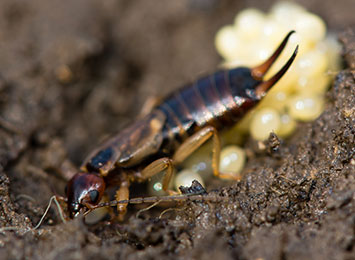Size: Around 16 millimeters long (or ⅝ inches)
Color: Reddish brown to dark brown with brighter, yellow-brown legs.
Earwigs have a large set of forceps-like pincers called cerci located on the tip of their abdomens (rear, opposite their heads). Earwigs use their cerci to hunt for food and defend themselves.
Most earwigs, including the European earwig, possess two sets of wings and are capable of limited flight. The name references these wings, which are shaped like a human ear when unfolded in flight.




